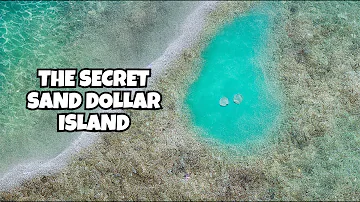How hard is it to find a sand dollar?
Sand dollars aren't as easy to find as shells. They like to hide under the sand and don't always make it to shore. Try standing in shallow waters and shuffle your feet slowly into the wet sand. Perform this shell shuffle slowly enough that you don't mix the sand into the water, which will ruin your visibility.
How rare is a sand dollar?
Because sand dollars are so prolific, they are very common. The cost of a live sand dollar for an aquarium might run between five and fifteen dollars. You can pick up a sand dollar skeleton at many local beach souvenir shops from anywhere from a dollar to five dollars.

Is it common to find sand dollars?
The common Sand Dollar that we are all familiar with is just another name for a particular type of “flattened” sea urchin. The sand dollar is most often found in the temperate and tropical waters of the Northern Hemisphere. On a good day of beach combing on Ocean Isle Beach you may find a dozen or more Sand Dollars.
What is the best time of year to find sand dollars?
The most ideal time to search for sand dollars is during low tide or morning hours. However, morning is most ideal as mid-afternoon low tides combine with high winds, which creates choppy water, thus flip flopping sand dollars every which way.
Is it lucky to find a sand dollar?
Any beachcomber who finds Sand Dollars along their stroll considers it a lucky omen! They aren't likely to be found on many beaches, but there are several spots around the United States where you'll find them, including one of my favorites, Wingaersheek Beach, in Gloucester, Massachusetts.
What does finding a sand dollar mean?
Sand dollars can represent many things spiritually including choosing your own path, strength, flexibility, and freedom. Choosing your own path- sand dollars represent freedom and the ability to walk away from environments or people that are no longer working for you.
Can you hold a sand dollar?
As it can sometimes be difficult to determine whether or not a sand dollar is alive, it's always best to leave them where they were found." Hold the sand dollar and watch the tiny spines. If they move, it is alive. The spines will fall off quickly after the animal dies.
Should you keep sand dollars?
"Even after their death, the shells of sand dollars still provide a source of calcium carbonate for our oceans. As it can sometimes be difficult to determine whether or not a sand dollar is alive, it's always best to leave them where they were found."
What is the easiest way to find sand dollars?
Finding Sand Dollars
Beachcombers are most likely to find sand dollars in the morning at low tide, especially after a storm. When searching pay close attention to the area just below the high-tide line and look for round patches or depressions in the sand; these may turn out to be sand dollars on closer inspection.
Is it OK to take live sand dollars?
Live sand dollars will have a greenish or reddish brown color with a velvety coating. Dead sand dollars will be gray. If you're unsure, err on the side of caution, and put the sand dollar back in the water. It's illegal to remove a live sand dollar from the beach.
Why you shouldn’t take sand dollars from the beach?
"Even after their death, the shells of sand dollars still provide a source of calcium carbonate for our oceans. As it can sometimes be difficult to determine whether or not a sand dollar is alive, it's always best to leave them where they were found."
Is it OK to touch a live sand dollar?
Can you touch a live sand dollar? You can touch a live sand dollar, but their long spines can cause puncture wounds that may become infected and result in a burning sensation. If you have picked one and it seems to move, it's best to gently return it to the water.
What does it mean if I find a sand dollar?
Sand dollars can represent many things spiritually including choosing your own path, strength, flexibility, and freedom. Choosing your own path- sand dollars represent freedom and the ability to walk away from environments or people that are no longer working for you.
What happens if you pick up a sand dollar?
You can touch a live sand dollar, but their long spines can cause puncture wounds that may become infected and result in a burning sensation. If you have picked one and it seems to move, it's best to gently return it to the water.
What do you do after you find a sand dollar?
If you encounter a living sand dollar, let it live! You can place it quickly and gently under the water in the sand in the hopes that it will survive. But because sand dollars can't live very long without water, you'll most likely find them on the beach already dead.
Does sand dollar bite?
Sand dollars do not bite. However, their long spines can cause puncture wounds and their small bones in their spines can cause a burning sensation if they puncture the skin. Be careful when handling the underside of a sand dollar.
Where are you most likely to find a sand dollar?
Finding Sand Dollars
Beachcombers are most likely to find sand dollars in the morning at low tide, especially after a storm. When searching pay close attention to the area just below the high-tide line and look for round patches or depressions in the sand; these may turn out to be sand dollars on closer inspection.
Does touching sand dollars hurt them?
While sand dollars can emit a harmless yellow material called echinochrome, the sand dollars are absolutely not poisonous and you can touch them without fear whether they are alive or dead. Alive sand dollars should be put back in the water, though, and left alone.
What happens if you find a sand dollar?
Sand dollars can't survive out of the water, so if you find a live one, put it gently back in the water. If you find a sand dollar on the beach, it is probably no longer alive and it is ok to take. Even sand dollars that look grey or tan in color are dead if they have no tiny coating of furry spines on them.
Why can’t you take sand dollars?
It's illegal in many states to collect living sand dollars for the express purpose of drying them out and using them as decoration, and it's just plain cruel no matter what the law says. The fine is $500 for taking live sea creatures from South Carolina beaches.
Why can’t you keep sand dollars?
"Even after their death, the shells of sand dollars still provide a source of calcium carbonate for our oceans. As it can sometimes be difficult to determine whether or not a sand dollar is alive, it's always best to leave them where they were found."
What lives inside a sand dollar?
When these spines bunch up into tiny triangular-shaped cones, they mark a spot where captive amphipods or crab larvae are being held for transport to the sand dollar's mouth. Unlike sea stars that use tube feet for locomotion, a sand dollar uses its spines to move along the sand, or to drive edgewise into the sand.
What does it mean when you find a sand dollar?
Sand dollars can represent many things spiritually including choosing your own path, strength, flexibility, and freedom. Choosing your own path- sand dollars represent freedom and the ability to walk away from environments or people that are no longer working for you.
Is it okay to touch a sand dollar?
While sand dollars can emit a harmless yellow material called echinochrome, the sand dollars are absolutely not poisonous and you can touch them without fear whether they are alive or dead. Alive sand dollars should be put back in the water, though, and left alone.
What happens if you pick up a live sand dollar?
If you find a live one, return it to its home by placing it gently on the sea floor, so it can continue to play its important role in Sanibel's ecosystem.
Do sand dollars bite?
Sand dollars do not bite. However, their long spines can cause puncture wounds and their small bones in their spines can cause a burning sensation if they puncture the skin.


